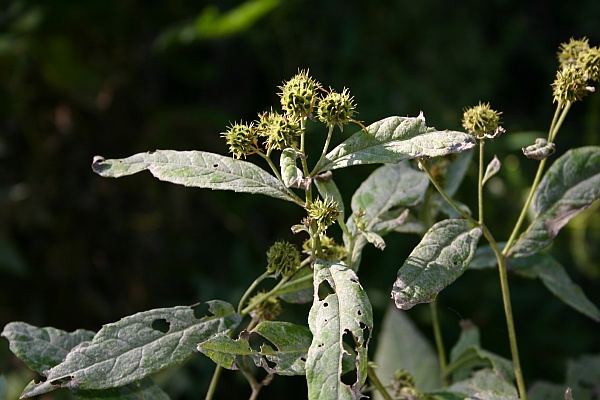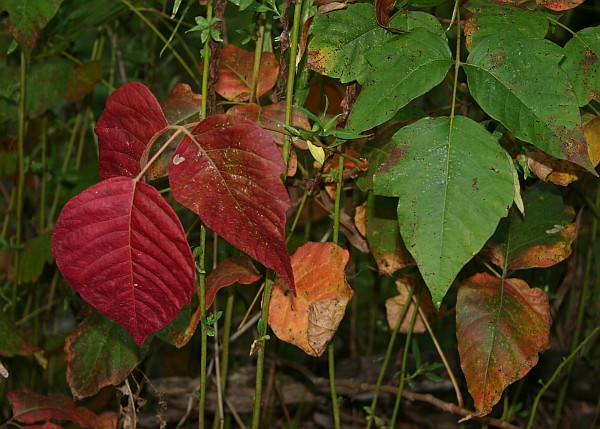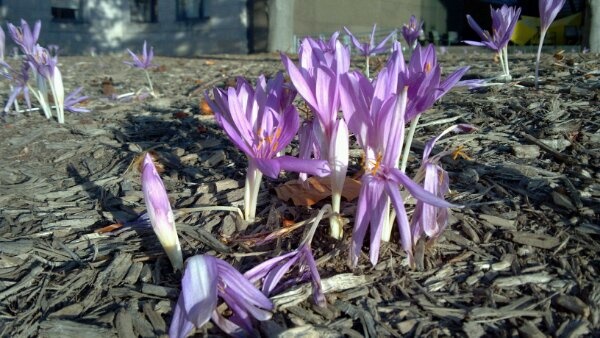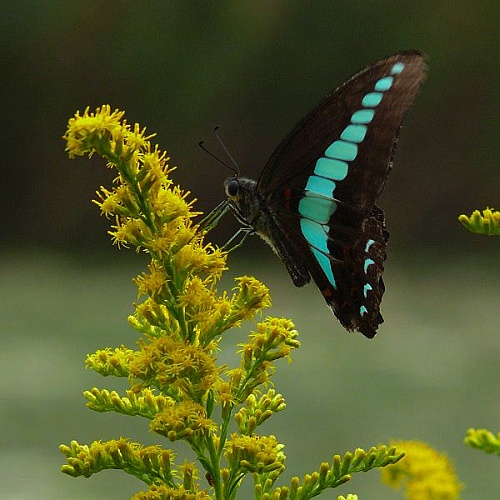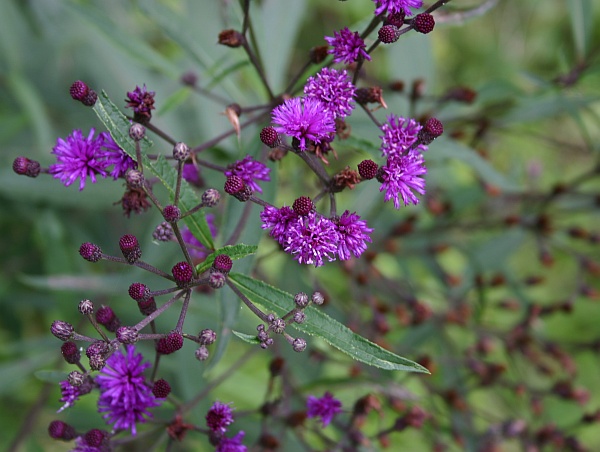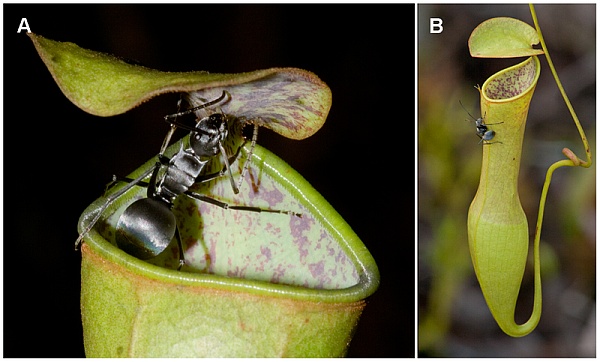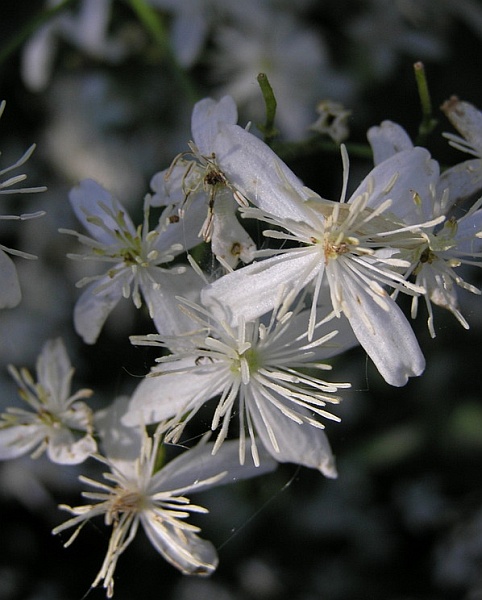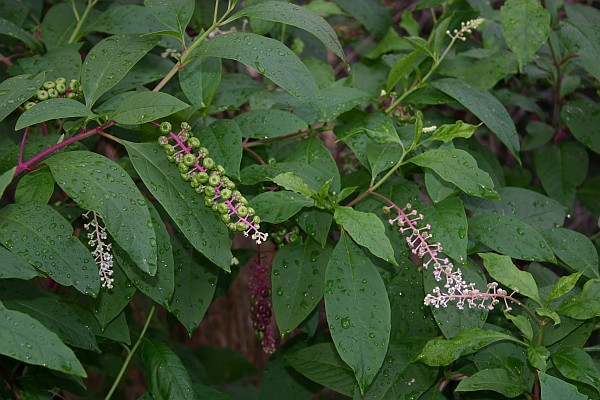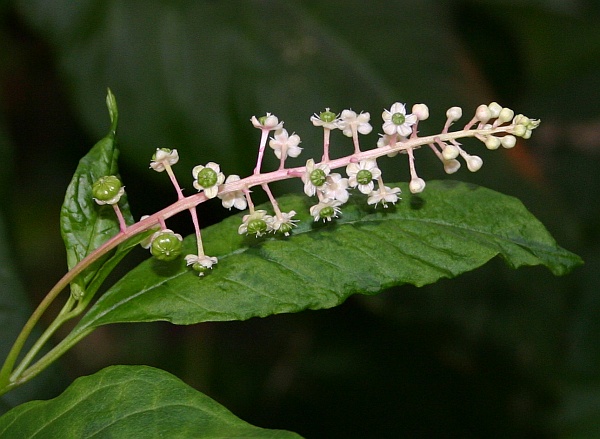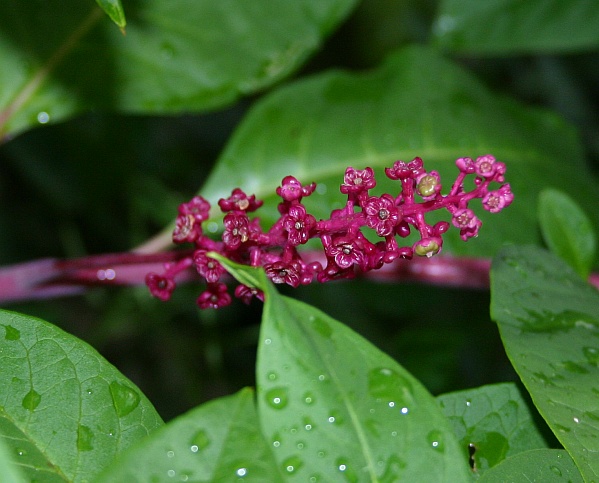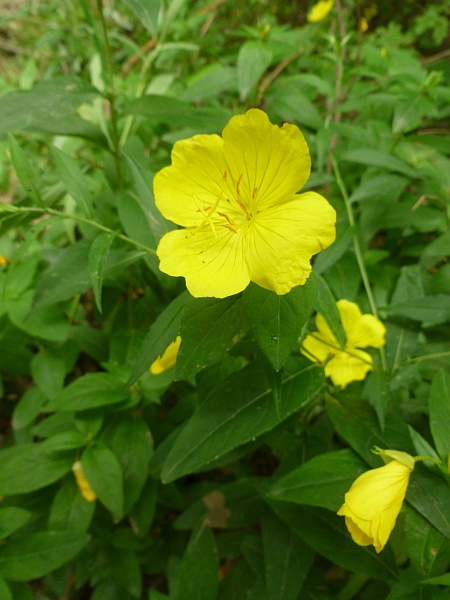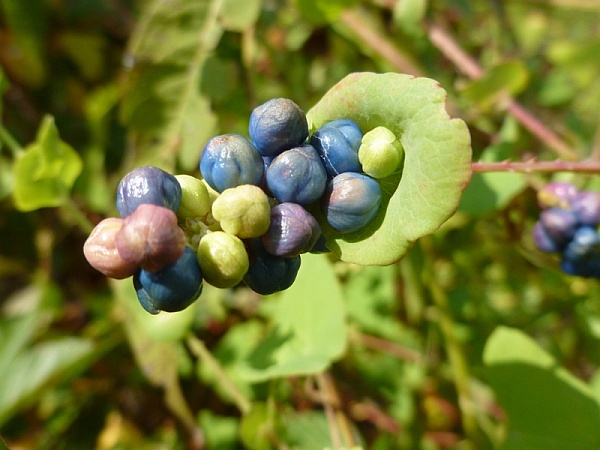
Pretty berries, right?
Wrong. You don’t want them! These are the fruits of mile-a-minute weed (Persicaria perfoliata), an invasive species that earned its name because it grows really fast — up to 25 feet in a single growing season.
Mile-a-minute arrived in Stewartstown, PA from Japan in the late 1930’s and spread from there. Because birds and animals eat the berries, the plant spreads easily to new and remote locations. I’ve seen it growing on top of Laurel Mountain; Dianne Machesney photographed these berries at Green Cove Wetlands.
Mile-a-minute can take over a sunny spot very quickly and choke out every plant that underlies it. You can recognize it by its triangular leaves, barbed stems (it’s called a “tearthumb”) and cup-shaped shield leaves at the stem joints.
Because mile-a-minute is an annual with shallow roots you can eradicate it if you’re vigilant. Put on stout gloves and pull it out. If it’s gone to seed — as it has by now — collect the seeds first, then pull.
Here’s what to do in a fun video from the Home and Garden Information Center at the University of Maryland Extension.
(photo of fruit by Dianne Machesney, photo of leaves in the public domain from Wikimedia Commons, video from University of Maryland Extension)

